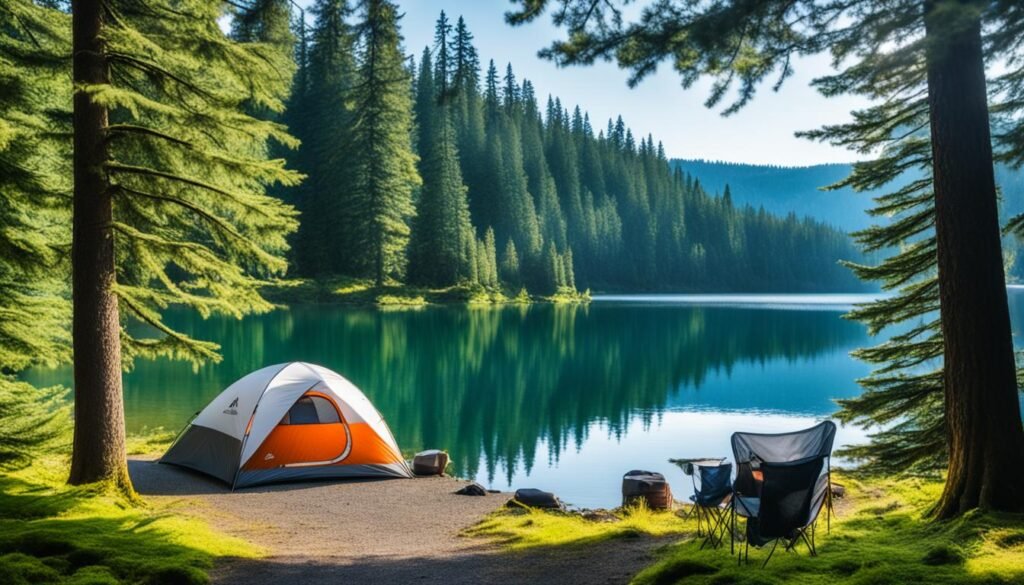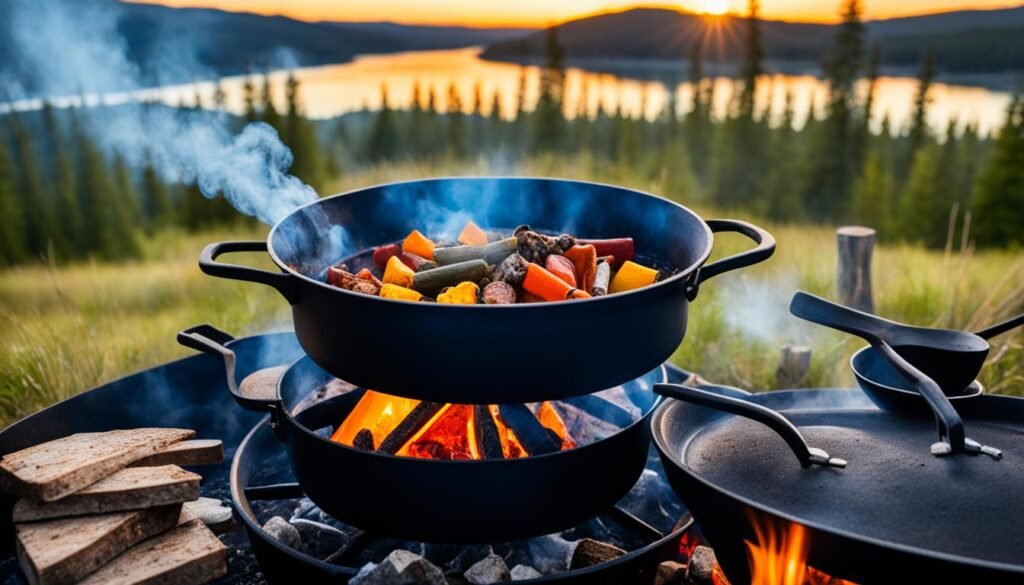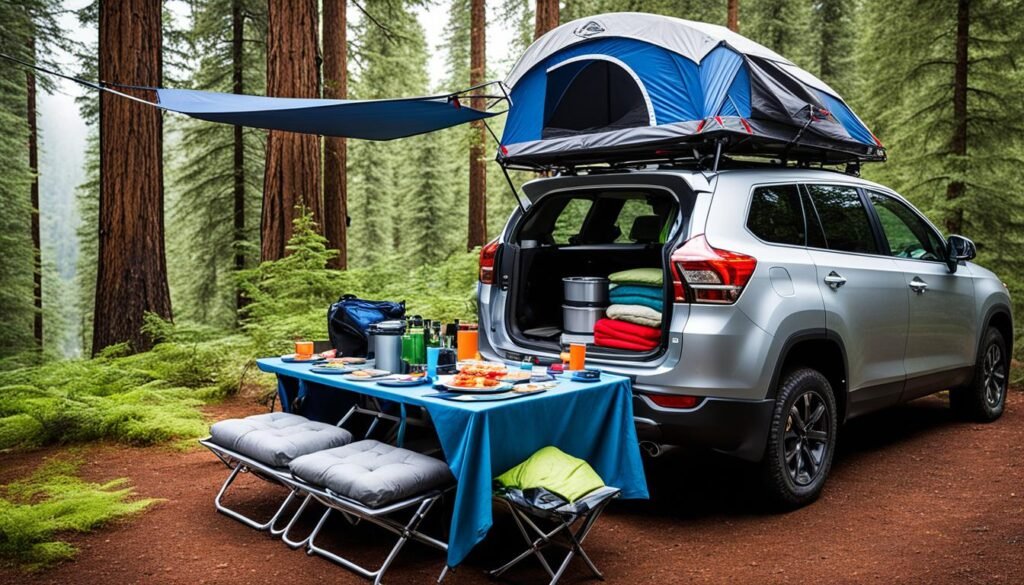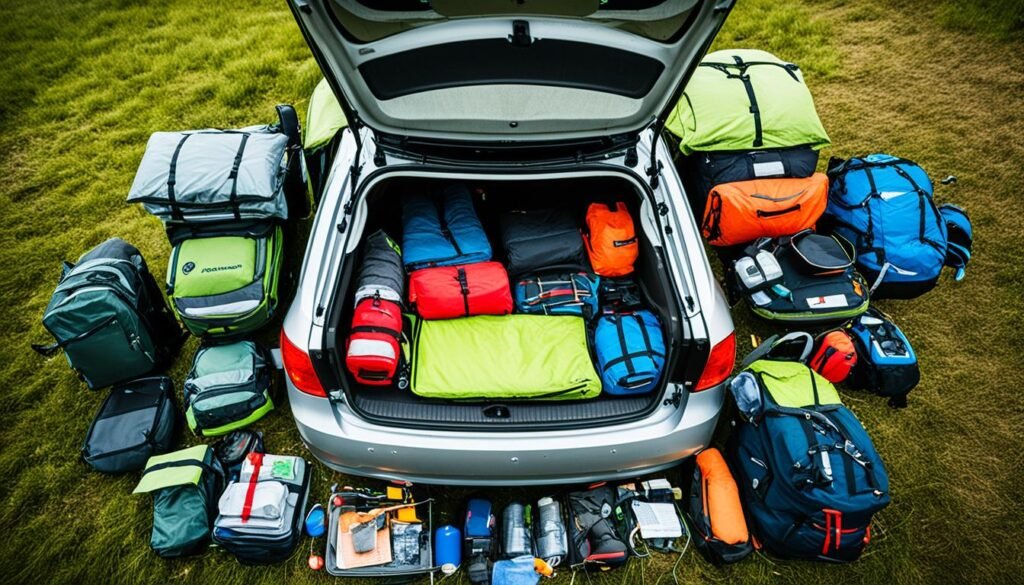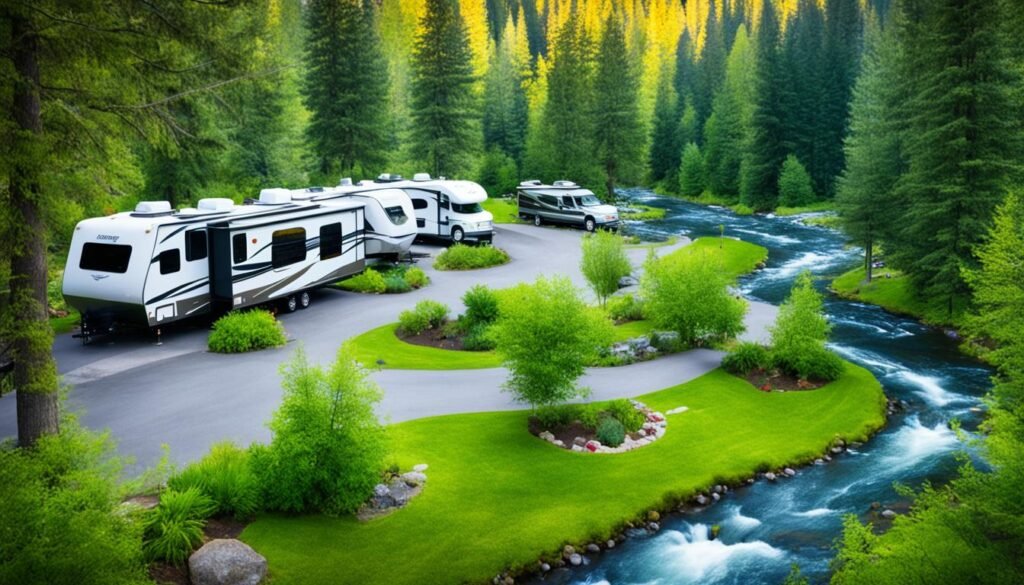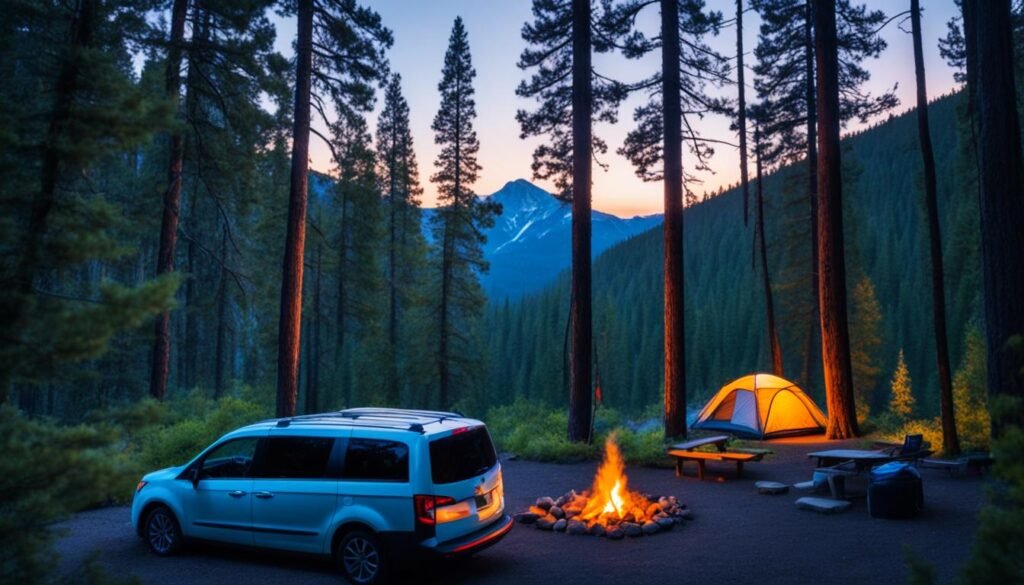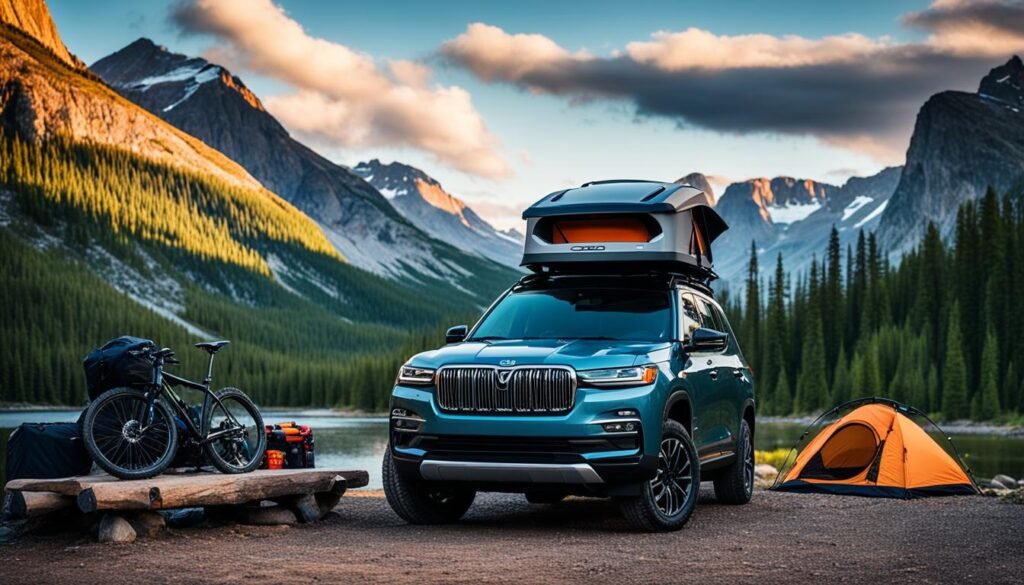Washington is a haven for outdoor enthusiasts, offering a plethora of opportunities for car camping. With its stunning landscapes, diverse camping spots, and access to scenic parks and coastal campsites, Washington is a must-visit destination for camping enthusiasts.
Car camping allows you to explore the natural wonders of the state while enjoying the comfort and convenience of your own vehicle. Whether you prefer camping in serene forests or by the picturesque coast, Washington has something for everyone.
Discover the best camping spots, reserve campsites, and explore dispersed camping options as you embark on an unforgettable adventure in Washington.
Key Takeaways
- Washington offers a variety of car camping options, including scenic parks and coastal campsites.
- Make reservations well in advance to secure your preferred campsite in popular areas.
- Consider exploring dispersed camping in national forests for a more off-the-grid experience.
- Proper planning and having the right gear are essential for a successful car camping trip.
- Free dispersed camping spots in Washington are a budget-friendly option for nature lovers.
Tips for Reserving Campsites in Washington
To secure a campsite in popular areas of Washington, it’s important to plan ahead. Washington State Parks allows reservations up to nine months in advance, allowing campers to secure their preferred campsites. National Parks like Mount Rainier and Olympic National Park also have reservation systems in place, with varying policies and availability windows. Additionally, National Forests in Washington offer campground reservations through recreation.gov, providing options for both camping and day use facilities.
When it comes to reserving campsites in Washington, here are some helpful tips:
- Plan Early: Make your reservations well in advance, especially for popular camping spots. Washington State Parks allows reservations up to nine months ahead of time, so take advantage of this early booking window.
- Research Availability: Before making a reservation, check the availability of campsites in your desired park or forest. National Parks and State Parks often have limited availability, especially during peak seasons, so it’s important to know the dates and campgrounds that have openings.
- Be Flexible: Keep a few backup options in mind in case your first choice is not available. Consider nearby parks or forests that offer similar amenities and natural beauty.
- Know the Policies: Each park or forest may have different reservation policies and camping regulations. Familiarize yourself with these guidelines to ensure a smooth and enjoyable camping experience.
- Stay Informed: Check the park or forest’s website regularly for any updates or changes to their reservation systems or campground conditions. By staying informed, you can plan accordingly and make any necessary adjustments to your camping itinerary.
Reserving campsites in Washington can be competitive, especially during peak seasons. By following these tips and planning ahead, you can secure a campsite and embark on a memorable outdoor adventure in the beautiful state of Washington.
Exploring Dispersed Camping in Washington
For those seeking a more off-the-grid camping experience, dispersed camping is a cost-effective option in Washington. Dispersed camping is allowed in National Forests and BLM land, providing opportunities to camp outside of designated campgrounds.
Some popular national forests for dispersed camping in Washington include the Olympic National Forest, Mount Baker-Snoqualmie National Forest, and Okanogan-Wenatchee National Forest. While dispersed camping typically does not offer amenities like picnic tables or running water, it allows campers to immerse themselves in nature and view wildlife without breaking the bank.
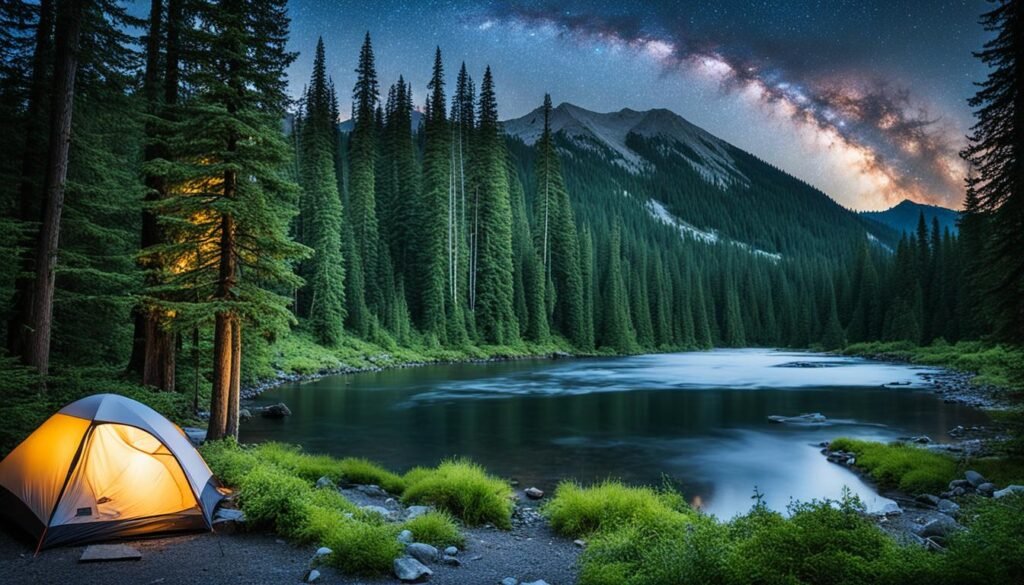
Benefits of Dispersed Camping
- Cost-effective camping option
- Opportunity to camp in remote areas
- Immersive nature experience
- Potential for wildlife sightings
Dispersed camping in Washington allows campers to escape the crowds and enjoy the tranquility of nature.
Unlike traditional campgrounds, dispersed camping is free or available at a lower cost, making it an attractive choice for budget-conscious travelers. It also provides the freedom to camp in more secluded areas, away from the hustle and bustle of crowded campsites.
Although amenities may be limited, such as picnic tables and running water, dispersed camping offers a unique opportunity to fully connect with the natural surroundings. Campers can wake up to the sounds of birds chirping, explore scenic trails, and witness wildlife up close.
Before embarking on a dispersed camping trip, it’s important to familiarize yourself with the regulations of the specific national forest or BLM land. Be prepared with the necessary camping gear, such as a tent, sleeping bag, cooking equipment, and provisions for a self-sufficient camping experience.
Dispersed camping in Washington is an adventurous way to experience the beauty of the state without compromising on cost or the joy of being immersed in nature.
Essential Tips for Car Camping in Washington
When planning a car camping trip in Washington, proper preparation is key to ensuring a smooth and enjoyable experience. Here are some essential tips to make the most of your adventure:
1. Make Reservations in Advance
Washington is a popular destination for camping, especially during peak seasons and holidays. To secure a campsite, it is advisable to make reservations well in advance. This ensures that you have a guaranteed spot at your preferred campground and helps avoid disappointment.
2. Pack the Right Gear
Having the right gear can significantly enhance your car camping experience. Make sure to pack essential items such as a tent, sleeping bags, cooking utensils, and camping chairs. It’s also important to consider the specific weather conditions in Washington and pack accordingly.
3. Renting Car Camping Gear
If you don’t camp frequently or want to minimize your environmental impact, renting car camping gear is a cost-effective and convenient option. Platforms like GeerGarage offer a variety of gear rental options, allowing you to have all the necessary equipment without the hassle of buying and storing it.
| Gear Rental Benefits | Gear Rental Options |
|---|---|
| Cost-effective | GeerGarage |
| Environmental-friendly | Outdoor Gear Rental |
| Convenient and hassle-free | Tentrr |
4. Plan for Campground Amenities
While car camping offers access to campgrounds with amenities like picnic tables, fire pits, and bathroom facilities, it’s essential to plan accordingly. Research the amenities available at your chosen campground and pack any additional items you might need, such as firewood, charcoal, or cooking supplies.
5. Follow Leave No Trace Principles
“Take only pictures, leave only footprints.”
– Ansel Adams
When enjoying the beauty of Washington’s outdoor spaces, it’s important to practice Leave No Trace principles. Respect the environment by disposing of waste properly, minimizing campfire impact, and leaving nature as you found it for future campers to enjoy.
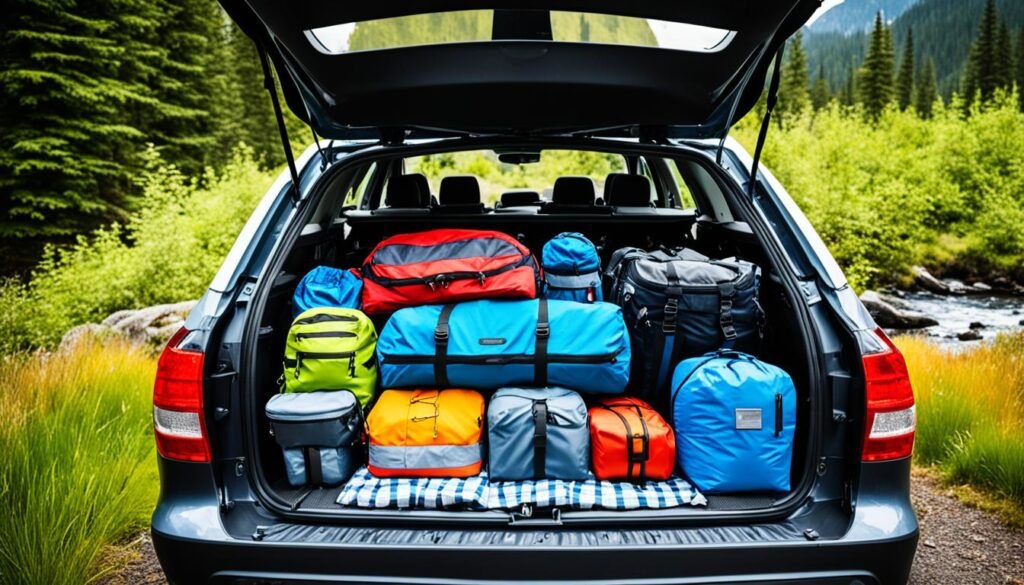
By following these essential tips for car camping in Washington, you can ensure a memorable outdoor experience surrounded by the breathtaking landscapes of the state.
Free Dispersed Camping in Washington
For campers on a budget, free dispersed camping spots in Washington can provide a memorable camping experience. Dispersed camping allows campers to camp outside of designated campgrounds, often in national forests or BLM land. These types of camping areas offer an opportunity to disconnect from crowded campgrounds and immerse oneself in nature.
Websites like Peace Vans and their guide to dispersed camping provide valuable resources to find the best free camping spots in Washington. These remote campsites are a great way to enjoy the tranquility of nature without the cost of a designated campground.
Whether you prefer the dense forests of Olympic National Forest, the breathtaking beauty of Mount Baker-Snoqualmie National Forest, or the vast landscapes of Okanogan-Wenatchee National Forest, there is no shortage of options for budget-friendly camping in Washington’s national forests. Similarly, BLM land offers dispersed camping opportunities for those looking to explore the diverse landscapes of the state while staying within their budget.
FAQ
Where are some popular car camping spots in Washington?
Washington offers a variety of scenic parks, serene forests, and picturesque coastal campsites for car camping. Some popular options include state parks, national parks like Mount Rainier and Olympic National Park, as well as national forests such as Olympic National Forest, Mount Baker-Snoqualmie National Forest, and Okanogan-Wenatchee National Forest.
How can I secure a campsite in popular areas of Washington?
To secure a campsite in popular areas of Washington, it is important to plan ahead. Washington State Parks allows reservations up to nine months in advance, while national parks like Mount Rainier and Olympic National Park also have reservation systems in place. National Forests in Washington offer campground reservations through recreation.gov.
Can I go camping outside of designated campgrounds in Washington?
Yes, you can go dispersed camping in Washington. Dispersed camping is allowed in National Forests and BLM land, providing opportunities to camp outside of designated campgrounds. Some popular national forests for dispersed camping in Washington include the Olympic National Forest, Mount Baker-Snoqualmie National Forest, and Okanogan-Wenatchee National Forest.
What are the essential tips for car camping in Washington?
Planning is essential for a successful car camping trip in Washington. It is advisable to make reservations in advance, especially during peak seasons and holidays. Additionally, having the right gear can enhance the camping experience. Renting car camping gear is a cost-effective option, and platforms like GeerGarage offer affordable gear rental options.
How can I find free dispersed camping in Washington?
If you are on a budget, free dispersed camping spots in Washington can provide a memorable camping experience. These spots allow you to camp outside of designated campgrounds, often in national forests or BLM land. Websites like Peace Vans and their guide to dispersed camping provide valuable resources to find the best free camping spots in Washington.

